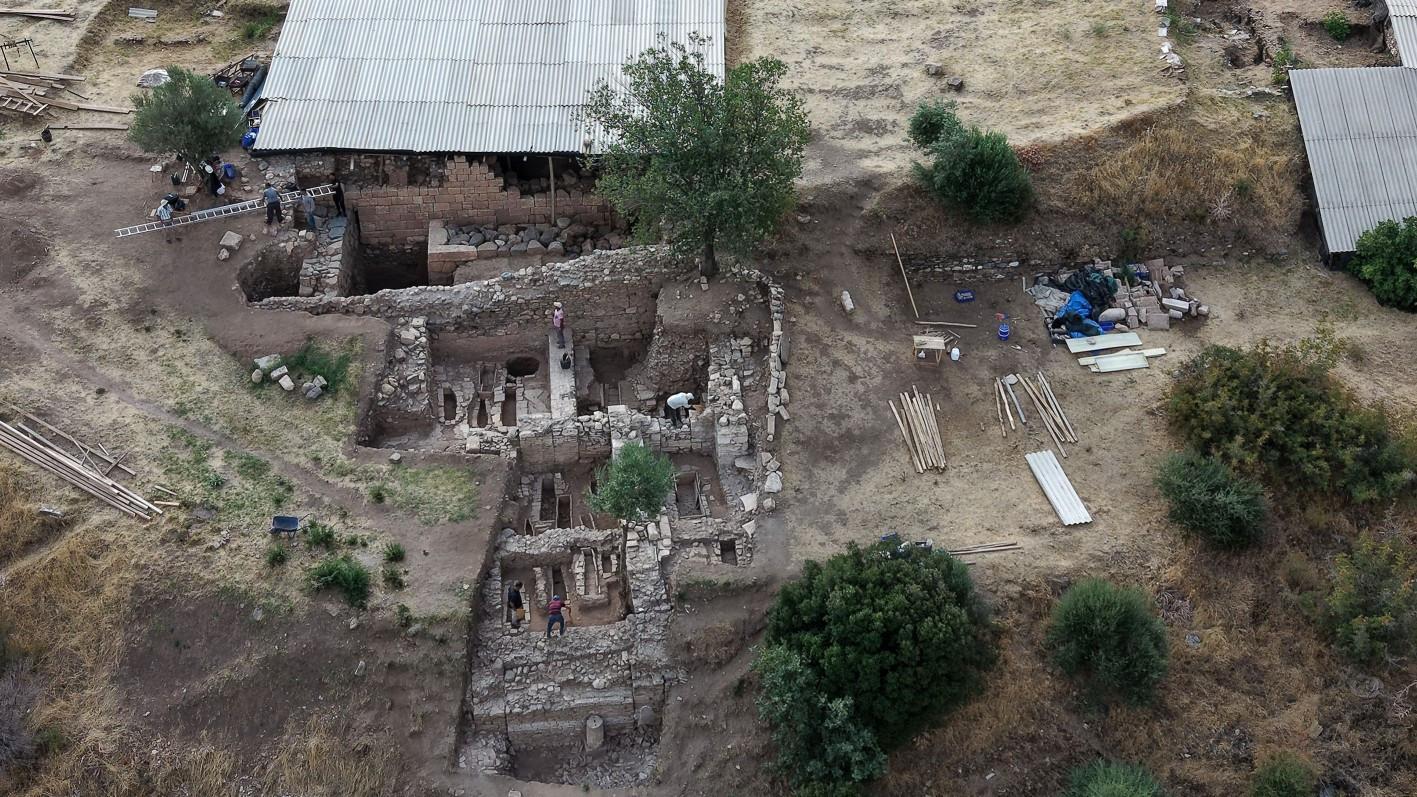
Archaeological research carried out in Sardis, an ancient city on the UNESCO World Heritage List, has uncovered remains of the Lydian Palace dating back to the eighth century B.C.
Located in the Salihli district of Manisa, Sardis was the capital of the Lydian state and is known as the first place in history where money was minted under state guarantee. Archaeological excavations and restoration works that began about 120 years ago in Sardis are being conducted under the leadership of Professor Nicholas Cahill from the University of Wisconsin.
Dating back to 1,200 B.C., Sardis hosts numerous structures and artifacts that survived from different civilizations. Visitors to the ancient city can see Lydian tumuli, the Temple of Artemis from the polytheistic era, the largest synagogue of antiquity recorded in history, the church mentioned in the Gospel of John, as well as monumental Roman baths and a gymnasium.
This year’s excavations in Sardis reached remains of a palace, luxury houses and terraces from the Lydian period, about eight meters deep.
Speaking to the state-run Anadolu Agency, Cahill said it is difficult to reach the Lydian period in Sardis because layers from the Persian, Hellenistic, Roman and Byzantine eras lie above it.
He explained that excavations east of the gymnasium managed to penetrate these layers and reach the Lydian period, adding: “At this level, about 30 bronze arrowheads, human skeletal fragments and nine silver coins were found. These coins were among the world’s earliest known silver coins. An earlier phase dating back to the beginning of the sixth century B.C. was uncovered. In the third phase, a layer from the eighth century B.C. buried underground was identified, and it was revealed that a palace was built in the same direction. It is a monumental structure with stone walls 1.5-2 meters wide and more than 6 meters high.”
Cahill said the discovery of the palace is historically significant, adding, “This finding is important because while Greek cities in the 8th century only built small houses, the Lydians began building monumental terraces and structures much earlier. This architecture may also have been inspired by the monumental buildings of the Phrygians in the 9th and 10th centuries B.C. Historians thought the Lydians were somewhat like the Greeks, believing they began urbanization in the seventh century B.C. and lived in villages before that. But now, with these new findings, we have learned that was wrong. Sardis became a large monumental city in the eighth century B.C. They started the terrace system at that time. This shows that the Lydians looked eastward and were essentially an Anatolian civilization, not a Greek one.”
Cahill noted that excavation works in the area were completed this year and that the Lydian Palace and its surrounding extensions were covered to protect them from rainfall damage. He added that excavations will continue next season.